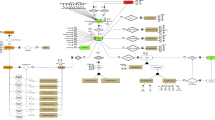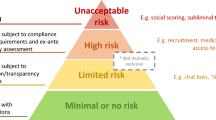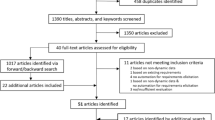Abstract
Collaborative ontology-engineering methods usually prescribe a set of processes, activities, stakeholders, and the roles each stakeholder plays in these activities. We, however, believe that (a) the stakeholder community of each ontology-engineering project is different, and (b) one can observe different types of user behavior. It may thus very well be that the prescribed set of stakeholder types and roles do not suffice. If one were able to identify these user behavior types, which we will call user profiles, one can compliment or revisit those predefined roles. For instance, those user profiles can be used to provide customized interfaces for optimizing activities in certain ontology-engineering projects. We present a method for discovering different user profiles based on the interactions users have with each other on a collaborative ontology-engineering environment. Our approach clusters users based on the types of interactions they perform, which are retrieved from datasets that were annotated with an interaction ontology—built on top of SIOC—that we have developed. We demonstrate our method using the database of two instances of the GOSPL ontology-engineering tool. The databases contain the interactions of two distinct ontology-engineering projects involving, respectively, 42 and 36 users. For each dataset, we discuss the findings by analyzing the different clusters. We found that we are able to discover different user profiles, indicating that the approach we have taken is viable, though more experiments are needed to validate the results and to discover patterns across ontology-engineering projects.






Similar content being viewed by others
Notes
http://blogs.gartner.com/debra_logan/2010/01/11/what-is-information-governance-and-why-is-it-so-hard/ (last accessed on August 22, 2016).
That is, meaningful for that community.
The ontology can be found on http://minf.vub.ac.be/ODBASE/interactions.rdf.
The ontology can be found on http://minf.vub.ac.be/ODBASE/gosplinteractions.rdf.
Note that for the same structured dataset we can now extract 11 dimensions since here the semantic interoperability required is now captured in the GOSPL tool, whereas in the first dataset these requirements were not explicitly captured.
Dimensions 4, 5, 6 and 7 have very low interaction amounts over the complete dataset.
References
Armstrong RA, Slade SV, Eperjesi F (2000) An introduction to analysis of variance (ANOVA) with special reference to data from clinical experiments in optometry. Ophthalmic Physiol Opt 20(3):235–241
Berrueta D, Brickley D, Decker S, Fernández S, Görn C, Harth A, Heath T, Idehen K, Kjernsmo K, Miles A, Passant A, Polleres A, Polo L (2010) SIOC core ontology specification. W3c member submission, W3C, http://www.w3.org/Submission/2007/SUBM-sioc-spec-20070612/. Accessed 22 Aug 2016
Billsus D, Pazzani MJ (1999) A personal news agent that talks, learns and axplains. In: Proceedings of the 3rd annual conference on autonomous agents, AGENTS ’99, pp 268–275
Cyganiak R, Bizer C, Garbers J, Maresch O, Becker C (2012) The D2RQ mapping language. http://d2rq.org/d2rq-language. Accessed 22 Aug 2016
Das S, Cyganiak R, Sundara S (2012) R2RML: RDB to RDF mapping language. W3C recommendation, W3C
De Leenheer P, Debruyne C, Peeters J (2009) Towards social performance indicators for community-based ontology evolution. In: Workshop on collaborative construction, management and linking of structured knowledge, collocated with the 8th international semantic web conference, ISWC ’09
De Leenheer P, Christiaens S, Meersman R (2010) Business semantics management: a case study for competency-centric HRM. Comput Ind 61(8):760–775
De Nicola A, Missikoff M, Navigli R (2009) A software engineering approach to ontology building. Inf Syst J 34(2):258–275
Debruyne C, Nijs N (2013) Using a reputation framework to identify community leaders in ontology engineering. In: Meersman R, Panetto H, Dillon TS, Eder J, Bellahsene Z, Ritter N, De Leenheer P, Dou D (eds) Proceedings of on the move to meaningful internet systems: OTM 2013 conferences-confederated international conferences: CoopIS, DOA-Trusted Cloud, and ODBASE 2013, OTM ’13, pp 677–684
Debruyne C, Tran TK, Meersman R (2013) Grounding ontologies with social processes and natural language. J Data Semant 2(2–3):89–118
Falconer SM, Tudorache T, Noy NF (2011) An analysis of collaborative patterns in large-scale ontology development projects. In: Musen MA, Corcho Ó (eds) Proceedings of the 6th international conference on knowledge capture, K-CAP ’11, pp 25–32
Golder SA, Donath J (2004) Social roles in electronic communities. In: Proceedings of the 5th conference of the association of internet researchers, AoIR ’04
Gruber T (1993) Toward principles for the design of ontologies used for knowledge sharing. Int J Hum Comput Stud 43:907–928
Guha R, Brickley D (2004) RDF vocabulary description language 1.0: RDF schema. W3C recommendation, W3C
Günter S, Bunke H (2003) Validation indices for graph clustering. Pattern Recogn Lett 24(8):1107–1113
Hautz J, Hutter K, Fuller J, Matzler K, Rieger M (2010) How to establish an online innovation community? the role of users and their innovative content. In: Proceedings of the 43rd Hawaii International Conference on System Sciences, HICSS ’10, pp 1–11
Jolliffe I (1986) Principal component analysis. Springer, New York, NY, USA
Khatri V, Brown CV (2010) Designing data governance. Commun ACM 53(1):148–152
Kotis K, Vouros GA (2006) Human-centered ontology engineering: the HCOME methodology. Knowl Inf Syst 10(1):109–131
Lang K (1995) Newsweeder: learning to filter netnews. In: Proceedings of the 12th international conference on machine learning, ML ’95, pp 331–339
Lieberman H (1995) Letizia: an agent that assists web browsing. In: Proceedings of the 14th international joint conference on artificial intelligence - Vol. 1, IJCAI’95, pp 924–929
Lieberman H, Van Dyke NW, Vivacqua AS (1999) Let’s browse: a collaborative web browsing agent. In: Proceedings of the 4th international conference on intelligent user interfaces, IUI ’99, pp 65–68
Linden G, Smith B, York J (2003) Amazon.com recommendations: item-to-item collaborative filtering. IEEE Int Comput 7(1):76–80
McDonald DW, Ackerman MS (2000) Expertise recommender: a flexible recommendation system and architecture. In: Proceedings of the 2000 ACM conference on computer supported cooperative work, CSCW ’00, pp 231–240
Middleton SE, Shadbolt NR, De Roure DC (2004) Ontological user profiling in recommender systems. ACM Trans Inf Syst 22(1):54–88
Nolker RD, Zhou L (2005) Social computing and weighting to identify member roles in online communities. In: Proceedings of the 2005 IEEE/WIC/ACM international conference on web intelligence, WI ’05, pp 87–93
Pang B, Lee L (2008) Opinion mining and sentiment analysis. Found Trends Infn Retr 2(1–2):1–135
Pennacchiotti M, Popescu AM (2011) A machine learning approach to twitter user classification. In: Proceedings of the 5th AAAI conference on weblogs and social media, ICWSM ’11, pp 281–288
Pinto HS, Staab S, Tempich C (2004) DILIGENT: towards a fine-grained methodology for distributed, loosely-controlled and evolving engineering of ontologies. In: Proceedings of the 16th European conference on artificial intelligence, ECAI ’04, pp 393–397
Pontikakos C, Zakynthinos G, Tsiligiridis T (2005) Designing cscw system for integrated, web-based, cotton cultivation services. Oper Res Int J 5(1):177–191
Prud’hommeaux E, Seaborne A (2008) SPARQL query language for RDF. W3C Recommendation, W3C
Resnick P, Iacovou N, Suchak M, Bergstrom P, Riedl J (1994) Grouplens: an open architecture for collaborative filtering of netnews. In: Proceedings of the 1994 ACM conference on computer supported cooperative work, CSCW ’94, pp 175–186
Rowe M, Fernández M, Angeletou S, Alani H (2013) Community analysis through semantic rules and role composition derivation. J Web Semant 18(1):31–47
Schafer JB, Konstan JA, Riedl J (2001) E-commerce recommendation applications. Data Min Knowl Disc 5(1–2):115–153
Shardanand U, Maes P (1995) Social information filtering: algorithms for automating word of mouth. In: Proceedings of the SIGCHI conference on human factors in computing systems, CHI ’95, pp 210–217
Tudorache T, Nyulas C, Noy NF, Musen MA (2013) Webprotégé: a collaborative ontology editor and knowledge acquisition tool for the web. Semant Web J 4(1):89–99
Walk S, Singer P, Strohmaier M, Helic D, Noy NF, Musen MA (2015) How to apply markov chains for modeling sequential edit patterns in collaborative ontology-engineering projects. Int J Hum Comput Stud 84:51–66
Wang H, Tudorache T, Dou D, Noy NF, Musen MA (2013) Analysis of user editing patterns in ontology development projects. In: Meersman R, Panetto H, Dillon TS, Eder J, Bellahsene Z, Ritter N, De Leenheer P, Dou D (eds) Proceedings of on the move to meaningful internet systems: OTM 2013 conferences - confederated international conferences: CoopIS, DOA-Trusted Cloud, and ODBASE 2013, OTM ’13, pp 470–487
Wang H, Tudorache T, Dou D, Noy NF, Musen MA (2015) Analysis and prediction of user editing patterns in ontology development projects. J Data Semant 4(2):117–132
Acknowledgments
We would like to thank Em. Prof. Dr. Meersman R. for his valuable input, and the statistical team Prof. Dr. Coomans D., Prof. Dr. Questier F. and Simons K. for giving input on clustering principles using PCA.
Author information
Authors and Affiliations
Corresponding author
Descriptive Statistics of Datasets
Descriptive Statistics of Datasets
Descriptive statistics of the two datasets are provided in Tables 4 and 5. The dimensions of each table are:
-
dim 1: interactions about glosses
-
dim 2: interactions about lexons
-
dim 3: interactions about constraints
-
dim 4: interactions about supertype relations
-
dim 5: interactions about equivalence between glosses
-
dim 6: interactions about synonyms
-
dim 7: interactions considering general requests
-
dim 8: interactions considering replies
-
dim 9: interactions to close topics
-
dim 10: interactions about casting votes
-
dim 11: interactions about semantic interoperability requirements
Rights and permissions
About this article
Cite this article
Van Laere, S., Buyl, R., Nyssen, M. et al. Detecting User Profiles in Collaborative Ontology Engineering Using a User’s Interactions. J Data Semant 6, 71–82 (2017). https://doi.org/10.1007/s13740-016-0074-3
Received:
Revised:
Accepted:
Published:
Issue Date:
DOI: https://doi.org/10.1007/s13740-016-0074-3




